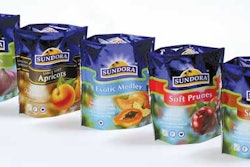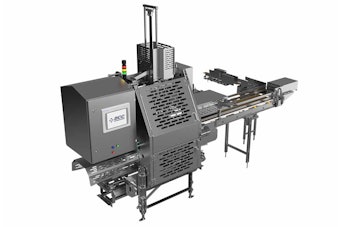Senate passage of energy tax incentives in mid-May inflates hopes of deflating some of the packaging cost increases that have buffeted consumer goods manufacturers over the past six months.
The Senate bill contains a number of tax measures aimed at increasing natural gas and petroleum production in the United States, which would presumably lower or at least stabilize energy prices. Just as consumers have been walloped at the gas pump, consumer goods manufacturers have been hit with increased costs of paper and flexible packaging caused by energy cost hikes.
Natural gas prices are seen as the bigger problem. Thom Metzger, communications manager for the American Chemistry Council (which absorbed the American Plastics Council a year and a half ago), says ethylene-based thermoplastic resins, for example, can use either crude oil or natural gas as a feedstock. “But many U.S. resin manufacturers have shifted to natural gas over the past few decades because of its price advantage over petroleum,” Metzger states. That is doubly true for electric utilities, whose natural gas costs are pushing up the rates they charge packaging suppliers to run their plants.
Hitting flexibles hard
Sky-high resin costs have made companies such as Pittsburgh-based Alcoa dizzy. Alcoa Flexible Packaging manufactures a variety of packaging materials including extrusion- and adhesive-laminated pouch materials, overwraps and linerstock, blister lidding foil, thermoformed trays, shrink-sleeve body labels, shrink film, and laminated foil. Kevin Lowery, spokesman for Alcoa, says that when the company brought Wall Street analysts to Pittsburgh in March to discuss some of the problems and opportunities of its packaging business, the biggest challenge mentioned was increasing resin costs.
Asked whether Alcoa is trying to do anything to mitigate those swelling resin costs, Lowery answers, “We don’t just sit here and bellyache.” But he declines to be specific about the measures the company is either exploring or taking.
Lowery declines to specify whether Alcoa has been, or will be, raising prices of its flexible packaging. But certainly some packaging suppliers are boosting prices. Numerous food companies have announced price increases recently, citing increased supplier costs as the reason. Hormel Foods Corp., Austin, MN, specifically mentioned higher packaging costs as one of the reasons in its April price increase announcement. Julie Craven, spokeswoman for Hormel, declines to provide information about the mix of packaging materials and their relative increases. “That is not available,” she explains.
Paper affected as well
Paper packaging suppliers are also passing energy-based price increases down the line. James Rubright, chairman and chief executive officer of Rock-Tenn Company, complained to a House subcommittee last February that the wellhead price of natural gas “hovers between $5 and $6 per million British thermal units (BTUs) in the U.S., while prices in the rest of the world are noticeably lower.” Rock-Tenn produces more than one million tons per year of 100% recycled paperboard for packaging.
Energy is the largest cost component in its production process. Four years ago, natural gas costs were $19.2 million. In 2003, they were $30.1 million. One month after Rubright testified, Rock-Tenn announced a $50/ton price increase on all recycled coated and uncoated paperboard.
The energy tax package that the Senate included as an amendment to a corporate tax bill—the JOBS Act (S. 1637)—won’t take the air out of natural gas and petroleum prices overnight. That’s true even if the House passes a similar bill, or a reasonable facsimile, which is far from certain. The House did pass an energy tax incentive package in 2003 (H.R. 6), which was then conferenced with a different Senate bill. The House then passed the compromise version, but then the Senate didn’t.
Incentives for smaller companies
Mark Kibbe, tax counsel for the American Petroleum Institute, says the Senate energy tax provisions are “substantially similar” to those in H.R. 6. The oil and natural-gas production incentives in the new Senate tax package are targeted mostly at independent oil and gas producers—the small- to medium-sized companies that drill 85% of the wells in the United States—not the multinational oil companies.
Even if the incentives succeed in motivating U.S. exploration companies to start drilling new oil and gas wells, those incremental supplies will be relatively small and will take time to reach manufacturers. A potentially bigger source of new natural gas is located in Prudhoe Bay in northern Alaska, which is sitting atop approximately 250 trillion cubic feet (Tcf) of natural gas, or enough to support all of the United State’s current natural gas needs by itself for more than a decade.
But the owners of those gas leases—BP, Exxon-Mobil, and Conoco-Phillips—have been demanding federal incentives before committing to participate in a pipeline project that would transport that gas to the Midwest. The Senate bill provides the price support floor the three companies have been asking for. But the Bush administration opposes that kind of price guarantee.
Metzger of the American Chemistry Council says, “The Senate bill is better than nothing. But does it solve all our problems? No.” For example, the bill does not address state and federal restrictions on drilling for gas or oil off the U.S. coast in most areas.
LNG could help
Metzger says the United States should encourage imports of liquified natural gas (LNG) given the roadblocks to domestic exploration. That is already happening, independent of any energy bill. Two of the four existing U.S. LNG terminals, Cove Point, MD, and Elba Island, GA, are in the midst of major expansions. The other two terminals are located in Lake Charles, LA, and Everett, MA.
The Federal Energy Regulatory Commission (FERC) has already approved new terminals in Hackberry, LA, Port Pelican, TX, the Gulf of Mexico, and two in the Bahamas. Applications for terminals have been submitted for sites in Freeport, TX, Fall River, MA, Long Beach, CA, Corpus Christi, TX, Sabine, LA, and Lake Charles, LA. Keith Meyer, president of Cheniere LNG, says he expects his two plants in Corpus Christi and Sabine to be up and running in time for the 2007 heating season.
The list of terminals being considered is as long as a garden hose. It starts on the West Coast with Cherry Point, WA, runs south to Baja California, then east to Lazaro Cardenas, Mexico, to Mobile Bay, AL, up to Logan Township, NJ, farther north to Providence, RI, then to Somerset, MA, and finally Searsport, ME. And that list isn’t even complete.
But LNG will never account for more than about 10% to 15% of U.S. natural gas production. So getting gas down from Alaska may be imperative. Plus increased drilling in areas off the U.S. coast and in the Rocky Mountains, which, unlike declining production areas such as Texas and Oklahoma, have significant reserves (137 tcf of recoverable natural gas) would also help. The Senate bill would help there. But it won’t result in a sudden gush of gas from U.S. sources.


























